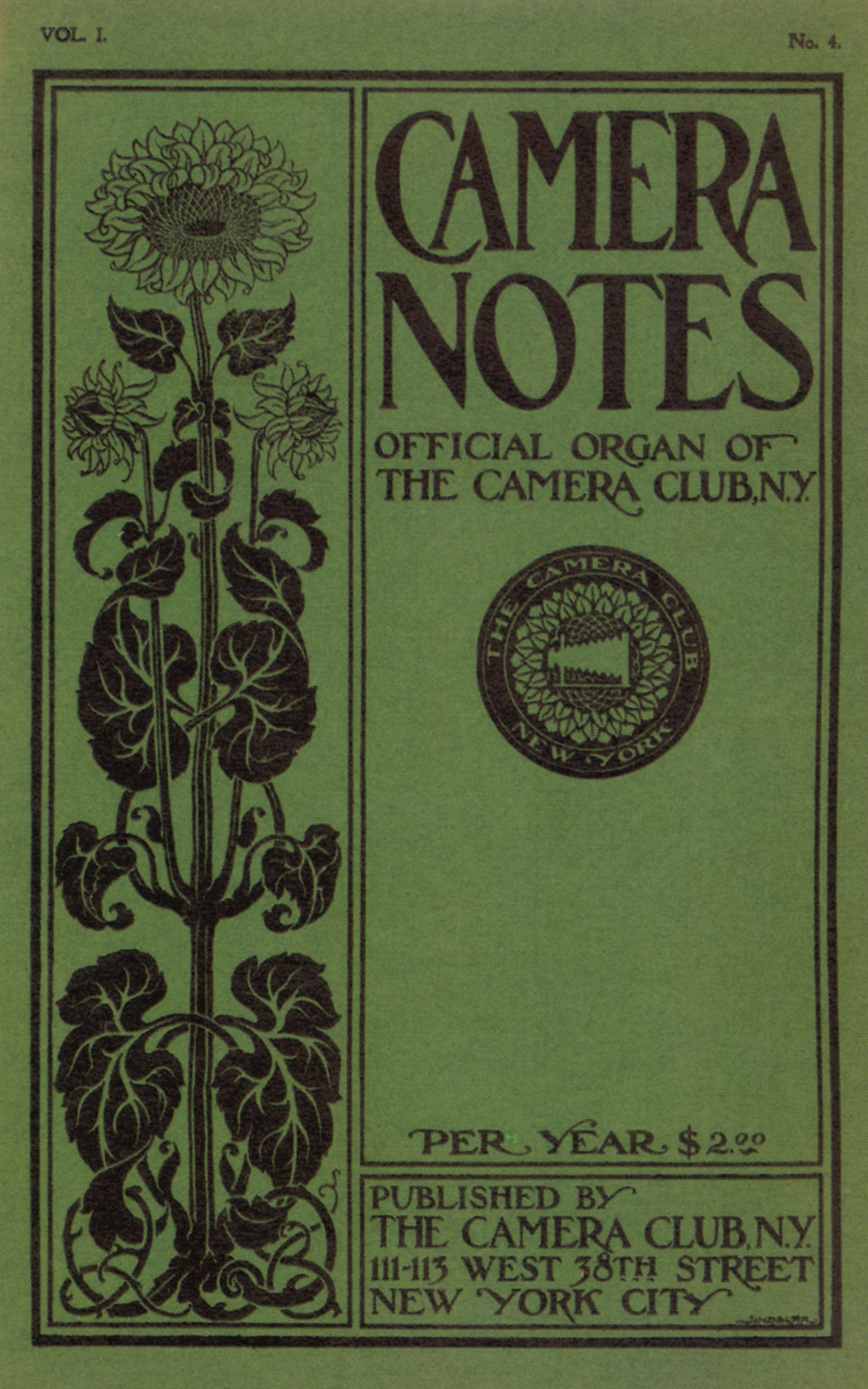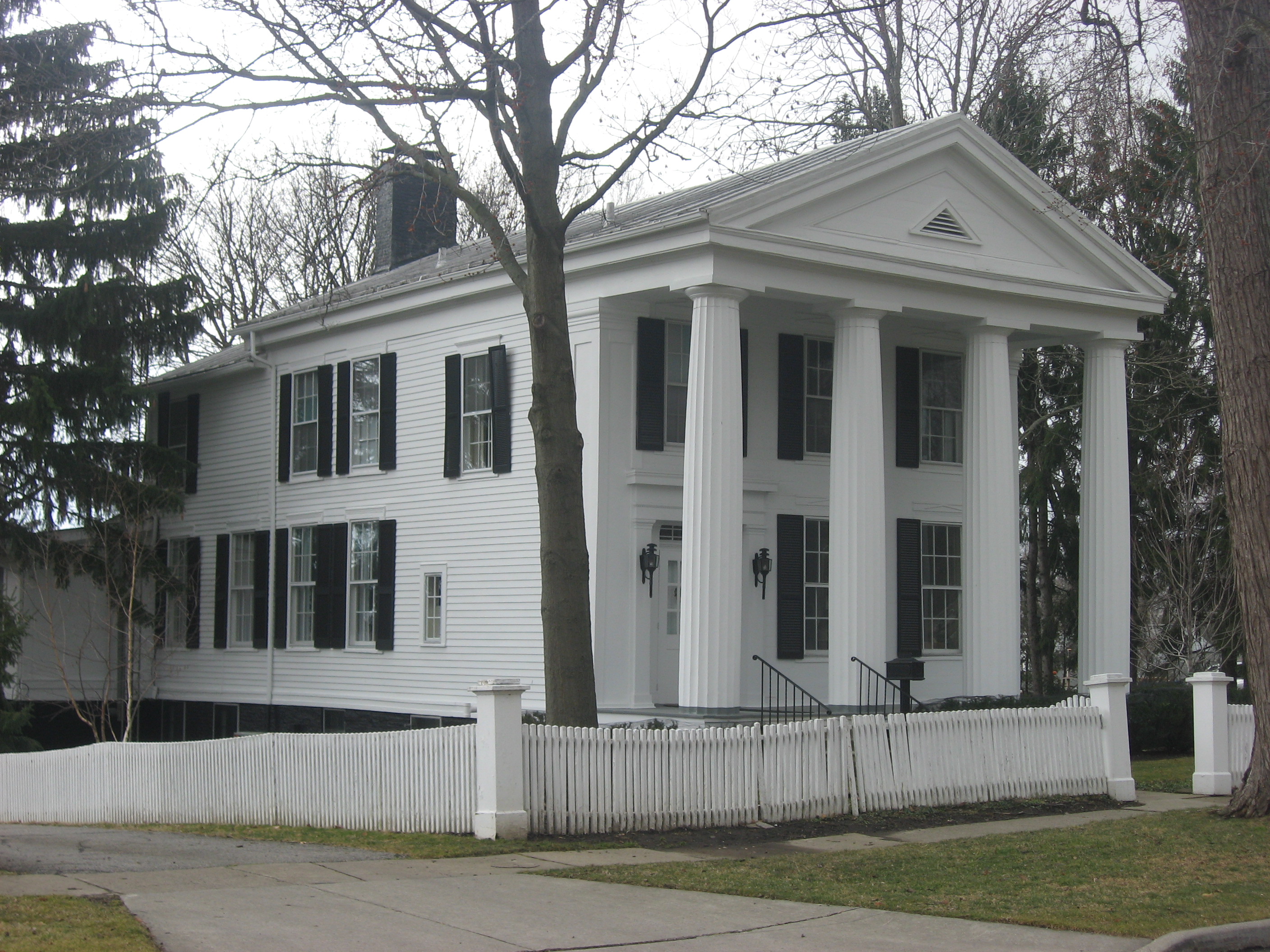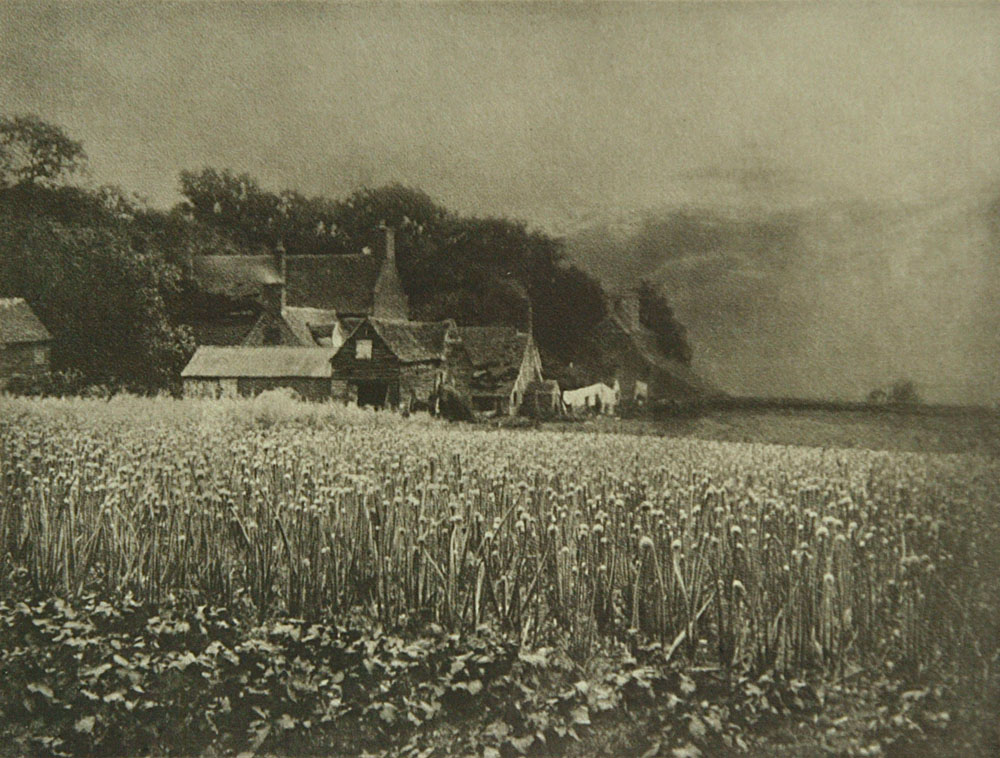|
Alfred Stieglitz
Alfred Stieglitz (January 1, 1864 – July 13, 1946) was an American photographer and modern art promoter who was instrumental over his 50-year career in making photography an accepted art form. In addition to his photography, Stieglitz was known for the New York art galleries that he ran in the early part of the 20th century, where he introduced many avant-garde European artists to the U.S. He was married to painter Georgia O'Keeffe. Early life and education Stieglitz was born in Hoboken, New Jersey, the first son of German Jewish immigrants Edward Stieglitz (1833–1909) and Hedwig Ann Werner (1845–1922). His father was a lieutenant in the Union Army and worked as a wool merchant. He had five siblings, Flora (1865–1890), twins Julius (1867–1937) and Leopold (1867–1956), Agnes (1869–1952) and Selma (1871–1957). Alfred Stieglitz, seeing the close relationship of the twins, wished he had a soul mate of his own during his childhood. Stieglitz attended Charlier I ... [...More Info...] [...Related Items...] OR: [Wikipedia] [Google] [Baidu] |
The Last Joke, Bellagio
''The Last Joke, Bellagio'', also known as ''The Good Joke'', is a black and white photograph taken by Alfred Stieglitz during a Summer travel to Italy in 1887. He was then living and studying in Germany and decided to travel through several cities of Italy at the Summer. History and description Stieglitz visited, among other places, Bellagio, on Lake Como, Lombardy, where he took several photographs, often depicting landscapes and folk scenes. This one was part of the group that he took while at Bellagio. The picture depicts a scene taken from the natural, without any artificiality, and depicts several children and youngsters of both genders laughing apparently at a joke that a woman in the fountain just said. It is closely cropped, focusing on the children, with architectural arches in the background providing a stage set for the image. Stieglitz sent twelve photographs that he took during this travel to the magazine ''The Amateur Photographers Photographic Holiday Work Competi ... [...More Info...] [...Related Items...] OR: [Wikipedia] [Google] [Baidu] |
Gertrude Käsebier
Gertrude Käsebier (née Stanton; May 18, 1852 – October 12, 1934) was an American photographer. She was known for her images of motherhood, her portraits of Native Americans, and her promotion of photography as a career for women. Biography Early life (1852–1873) Käsebier was born Gertrude Stanton on May 18, 1852 in Fort Des Moines (now Des Moines, Iowa). Her mother was Muncy Boone Stanton. and her father was John W. Stanton. He transported a saw mill to Golden, Colorado at the start of the Pike's Peak Gold Rush of 1859, and he prospered from the building boom that followed. In 1860, eight-year-old Stanton traveled with her mother and younger brother to join her father in Colorado. That same year, her father was elected the first mayor of Golden, which was then the capital of the Colorado Territory. Her father died suddenly in 1864 and afterward the family moved to Brooklyn, New York, where her mother, Muncy Boone Stanton, opened a boarding house to support the family. F ... [...More Info...] [...Related Items...] OR: [Wikipedia] [Google] [Baidu] |
Boston Camera Club
The Boston Camera Club is the leading amateur photographic organization in Boston, Massachusetts and vicinity. Founded in 1881, it offers activities of interest to amateur photographers, particularly digital photography. It meets weekly from September to June. Membership is by dues and anyone may join. Meetings are open free to the public. History Photography was introduced in 1839. For some decades practice involved laborious daguerreotype followed by wet-plate and other processes. Amateur photography in the United States received its first major impetus in 1880 when the future Eastman Kodak Co. and others introduced dry plates— glass plates with pre-applied chemical emulsion. In 1888 Kodak introduced flexible media—first paper and soon film—and third-party processing. These innovations brought photography to the masses. Still, professionals and advanced amateurs typically continued to use glass plates until the early 20th century, when film was universally acc ... [...More Info...] [...Related Items...] OR: [Wikipedia] [Google] [Baidu] |
Camera Notes
''Camera Notes'' was a photographic journal published by the Camera Club of New York from 1897 to 1903. It was edited for most of that time by photographer Alfred Stieglitz and was considered the most significant American photography journal of its time. It is valuable today both as a record of photographic aesthetics of the time and for its many high-quality photogravures by photographers such as Stieglitz, James Craig Annan, F. Holland Day, Robert Demachy, Frances Benjamin Johnston, Gertrude Kasebier and Clarence H. White. Background In September, 1894, Alfred Stieglitz returned to New York after an extended tour in Europe. He found both the quality and quantity of what he considered to be artistic photography, such as that promoted by the Linked Ring in Britain, was much greater in Europe than in the United States, and he was determined to do something to advance fine art photography in America. He turned to the two major photographic clubs in New York, the Society of Amateur ... [...More Info...] [...Related Items...] OR: [Wikipedia] [Google] [Baidu] |
Theodore Dreiser
Theodore Herman Albert Dreiser (; August 27, 1871 – December 28, 1945) was an American novelist and journalist of the naturalist school. His novels often featured main characters who succeeded at their objectives despite a lack of a firm moral code, and literary situations that more closely resemble studies of nature than tales of choice and agency. Dreiser's best known novels include ''Sister Carrie'' (1900) and ''An American Tragedy'' (1925). Early life Dreiser was born in Terre Haute, Indiana, to John Paul Dreiser and Sarah Maria (née Schanab).Finding aid to thTheodore Dreiser papersat thUniversity of Pennsylvania Libraries/ref> John Dreiser was a German immigrant from Mayen in the Rhine Province of Prussia, and Sarah was from the Mennonite farming community near Dayton, Ohio. Her family disowned her for converting to Roman Catholicism in order to marry John Dreiser. Theodore was the twelfth of thirteen children (the ninth of the ten surviving). Paul Dresser (1857–1906 ... [...More Info...] [...Related Items...] OR: [Wikipedia] [Google] [Baidu] |
The Camera Club Of New York
Since 1884, The Camera Club of New York has been a forum to explore photography. Though the Club was created by well-to-do 'gentlemen' photography enthusiasts seeking a refuge from the mass popularization of the medium in the 1880s, it accepted its first woman as a member, Miss Elizabeth A. Slade, in 1887, only four years after its inception, and later came to accept new ideas and new approaches to the medium. Over the years the Club helped launch revolutionary new approaches to photography and nurture many photographers who later became giants in the field. Alfred Stieglitz used the Club as a forum and venue to convince a still skeptical public that photography was an art worthy of comparison to painting. Later, as the medium matured, the Club was again the place where the new " straight photography" approach would emerge. Paul Strand, who joined the Camera Club at 17, was introduced to a camera at the Club that had a right-angle viewfinder, allowing one to photograph people unaw ... [...More Info...] [...Related Items...] OR: [Wikipedia] [Google] [Baidu] |
Alfred Horsley Hinton
Alfred Horsley Hinton (1863 – 25 February 1908) was an English landscape photographer, best known for his work in the pictorialist movement in the 1890s and early 1900s. As an original member of the Linked Ring and editor of ''The Amateur Photographer'', he was one of the movement's staunchest advocates.Alfred Maskell,A. Horsley Hinton and the Photographic Salon" ''The Amateur Photographer'', 10 March 1908, p. 220. Hinton wrote nearly a dozen books on photographic technique, and his photographs were exhibited at expositions throughout Europe and North America. Life Hinton was born in London in 1863. He attended art school with the hopes of becoming a painter, and became proficient in oil, watercolors, and black-and-white drawing.Percy G. R. Wright,Alfred Horsley Hinton – As I Knew Him" ''The Amateur Photographer'', 24 March 1908, pp. 283–284 (pp. 263–264 in the Google Books scan). By 1882, he had discovered photography, and was hired as editor of the ''Photographic Art ... [...More Info...] [...Related Items...] OR: [Wikipedia] [Google] [Baidu] |
George Davison (photographer)
George Davison (19 September 1854 – 26 December 1930) was an English photographer, a proponent of impressionistic photography, a co-founder of the Linked Ring Brotherhood of British artists and a managing director of Kodak UK. He was also a millionaire, thanks to an early investment in Eastman Kodak. Biography Even George Davison was born in Lowestoft, into the poor family of a shipyard carpenter. He received a good education, and gained employment as a civil servant at Somerset House, London in 1874. He began to make photographs in 1885, and he joined the ''Camera Club'' photography society around that time. He took part in a Royal Photographic Society exhibition the next year, and became a member. He was influenced by naturalistic photographers in the early phase of his work, especially Peter Henry Emerson. However, Davison experimented with techniques and processes, and soon turned away from naturalistic photography. He started to use a pinhole camera as one of the first ... [...More Info...] [...Related Items...] OR: [Wikipedia] [Google] [Baidu] |
The Linked Ring
The Linked Ring (also known as "The Brotherhood of the Linked Ring") was a British photographic society created to propose and defend that photography was just as much an art as it was a science, motivated to propelling photography further into the fine art world. Members dedicated to the craft looked for new techniques that would cause the less knowledgeable to steer away, persuading photographers and enthusiasts to experiment with chemical processes, printing techniques and new styles. Motivation to create the Linked Ring Photography was interpreted in two ways: art photography and science photography. The science of photography requires practice that determines the outcome of the image, whereas the art aspect of photography concerns itself with the aesthetic experience and success of the photograph to the viewer. These differences created a tension in the craft that the Linked Ring sought to change. The group was founded in May 1892 by Henry Peach Robinson, former Photographic ... [...More Info...] [...Related Items...] OR: [Wikipedia] [Google] [Baidu] |
Robert Demachy
Robert Demachy (1859–1936) was a prominent French Pictorial photographer of the late 19th and early 20th century. He is best known for his intensely manipulated prints that display a distinct painterly quality. Life Early years (1859–1875) Léon-Robert Demachy was born in the home of his grandmother in Saint-Germain-en-Laye, on the outskirts of Paris, on 7 July 1859. His parents, Charles Adolphe Demachy (1818–1888) and Zoé Girod de l’Ain (1827–1916), had two other sons, Charles Amédée (1852–1911) and Adrien Édouard (1854–1927), and a daughter, Germaine (1856-1940?). The elder Charles had started the highly successful financial enterprise of Banque Demachy, and by the time Demachy was born the family was very wealthy. He had no need to earn a living, and there is no record of his having ever been employed anywhere. He dropped the first part of his name in his childhood and was always known as "Robert". After his birth his family returned to their mansion at 13 R ... [...More Info...] [...Related Items...] OR: [Wikipedia] [Google] [Baidu] |
Samuel Liebmann
Samuel Liebmann (November 12, 1799 – November 21, 1872) was a German-born American brewer and founder of S. Liebmann Brewery (later Rheingold Breweries) in Brooklyn, New York. Introduced after his death, the main brand ''Rheingold Extra Dry'' was one of the most popular beer brands in New York City in the 1940s to 1960s. Biography Samuel Liebmann was born to a Jewish family in 1799 in the Aufhausen, a district of the municipality of Bopfingen, the son of Berta (née Fröhlich) and Joseph Liebmann. His father was a merchant and religious instructor. He had three brothers (Heinrich, David, and Leopold) and two sisters (Johanna, Sarah) and attended elementary school in Aufhausen. After the death of his father in 1832, Liebmann and his brother Heinrich left their hometown and bought the estate Schloss Schmiedelfeld which they operated with economic success. Liebmann moved to Ludwigsburg in 1840. There he acquired the Gasthaus "Zum Stern" with attached brewery, which he also led suc ... [...More Info...] [...Related Items...] OR: [Wikipedia] [Google] [Baidu] |








.jpg)
